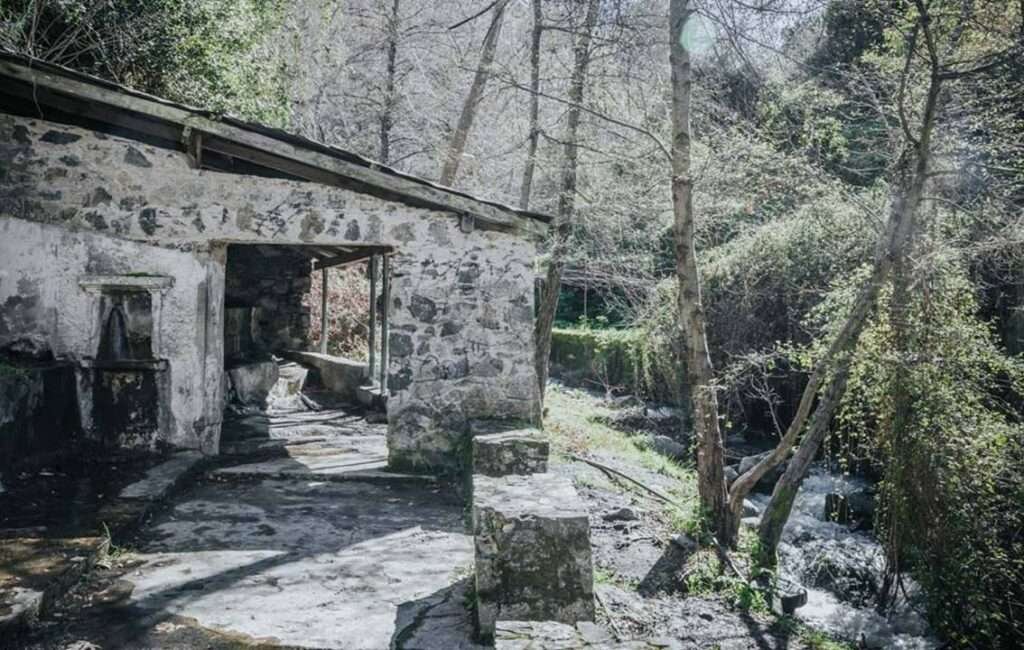A THERAPEUTIC PARADISE
A CULTURAL HERITAGE
Nestled in the verdant foothills of the Troodos Mountains, within the district of Nicosia, lies the picturesque village of Kalopanayiotis. Renowned for its natural beauty and rich cultural heritage, this village is particularly famed for its sulphur springs. The presence of sulphur in the springs also indicates the region’s tectonic activity, suggesting that the springs have formed through geological processes involving a series of volcanic activities. This activity it seems, has also shaped the landscape and the area surrounding the village over millennia.
A FOCAL POINT OF WELLNESS
As a result, the springs have been a focal point of wellness and healing for locals and visitors alike for centuries. The warm waters that emerge from the earth are rich in minerals believed to possess several therapeutic properties. The springs have also played a significant role in the local economy and community of the village over the ages.
A STORIED HISTORY
The sulphur springs have a storied history. This directly intertwines with the broader narrative of the island and the village of Kalopanayiotis. Historical records mention the springs throughout antiquity. The ancient Greeks were among the first to document the benefits of the thermal springs, which also gained prominence during the Byzantine period. The springs were also regarded as a place of healing and rejuvenation by several religious orders at each subsequent time. Both Latin and Greek Monks, as well as several other prominent religious figures, would often frequent the springs. These people sought both refuge and spiritual healing, and the proximity of the Monastery of Saint John the Theologian further solidifies the spring’s status as a centre of spiritual healing.
A FORMALISED APPROACH TO SPA CULTURE
In the 19th and early 20th centuries, spa towns across Europe became increasingly popular, particularly for those seeking remedies for various ailments. The sulphur springs of Kalopanayiotis were no exception. Basic facilities were installed as visitor numbers to the area increased. This later marked the beginning of a more formalised approach to a spa culture within the village, setting the foundation for modern spa tourism. The village of Kalopanayiotis would eventually become a popular retreat for the affluent in the latter part of the 20th century. Today, the springs have become a featured destination that has further enhanced the area’s reputation.
A VITAL ASPECT OF HERITAGE
The sulphur springs of Kalopanayiotis have played a crucial role in shaping the area’s identity. They have become a vital aspect of its heritage and livelihood. Visitors, enjoying the warm waters year on year, often enhance the appeal of Kalopanayiotis as a spa destination. This has allowed the village to fully embrace this type of tourism. The recent development of various services and facilities, including hotels, restaurants, and small wellness centres, has also made the site even more popular. The springs have also influenced several local traditions and practices. As a result, annual local festivals and events often include rituals or ceremonies celebrating the healing powers of the springs.
A NATURAL WONDER
The sulphur springs of Kalopanayiotis reflect not only the natural wonders of Cyprus but also the deep historical and cultural narratives of the region. From their ancient origins to their role in modern wellness culture, the springs serve as a testament to the harmonious relationship between nature and the community. As the village of Kalopanayiotis continues to evolve, the springs remain a vital part of its identity, attracting visitors seeking healing and rejuvenation. The village continues to maintain tourism growth with the sustainable preservation of this unique natural site. This ensures that the sulphur springs will continue to flow for many generations to come.


Interesting facts
Therapeutic Benefits: The sulphur springs are believed to be beneficial for various ailments. These include skin, arthritis, and respiratory issues. The minerals in the water, particularly sulphur, are thought to promote both detoxification and rejuvenation. The water temperature in the springs can reach up to 40°C, making them ideal for therapeutic bathing.
Environmental Conservation: Efforts have been made to preserve the natural beauty and ecological significance of the area surrounding the springs. Authorities, along with local organisations, continue to work towards sustainable tourism practices. They do this to protect the delicate ecosystems and ensure the longevity of the springs.
Cultural Heritage Site: The village of Kalopanayiotis itself is recognised for its rich cultural heritage. This includes traditional architecture and ancient monasteries. In 2018, the village of Kalopanayiotis was added to the UNESCO World Heritage list as part of the ‘Mediterranean island and coastal regions’ designation. This has helped to highlight the area’s historical and cultural significance.
Celebrity Visits: The sulphur springs have attracted various well-known visitors. These have included artists, writers, and politicians. Their endorsements have helped raise the spring’s awareness and the unique cultural ambience of the immediate area surrounding the village of Kalopanayiotis.
Artistic Inspiration: The beauty of Kalopanayiotis and its springs has gone on to inspire numerous artists and writers. As a result, the village of Kalopanayiotis, with its scenic landscapes, ancient architecture, and historical significance, remains a muse for creative expression.


